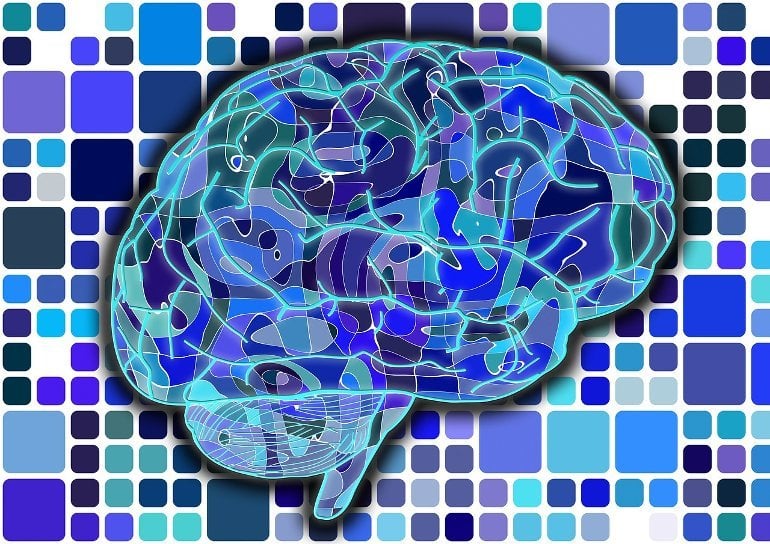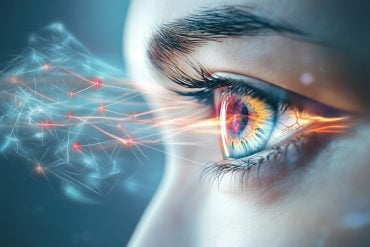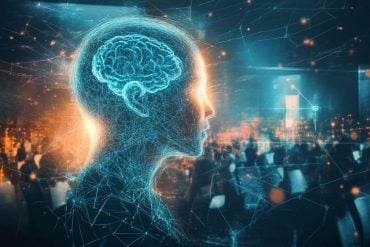Summary: Children on the autism spectrum may not always process bodily movements correctly, especially if they are distracted by something else.
Source: Rochester University
Noticing and understanding what it means when a person leans into a conversation or takes a step back and crosses their arms is a vital part of human communication.
Researchers at the Del Monte Institute for Neuroscience at the University of Rochester have found that children with autism spectrum disorder may not always process body movements effectively, especially if they are distracted by something else.
“Being able to read and respond to someone’s body language is important in our daily interactions with others,” said Emily Knight, M.D., Ph.D., clinical and postdoctoral fellow in Pediatrics and Neuroscience, is the first author of the study recently published in Molecular Autism.
“Our findings suggest that when children with autism are distracted by something else, their brains process the movements of another person differently than their peers.”
Key differences in brain processes
Using electroencephalogram (EEG), researchers recorded the brain waves of children with and without autism as they watched videos of moving dots that were arranged to look like a person.
In these videos the dots moved to represent actions such as running, kicking, or jumping, and at times were turned in different directions or jumbled to no longer move like a person. The six to 16 years olds were asked to either focus on the color of the dots or to focus on whether the dots moved like a person.
Researchers found the brainwaves of children with autism did not process when the dots moved like a person if they were focused on the dot color.
“If their brain is processing body movements less they might have a harder time understanding other people, and need to pay extra attention to body language in order to see it,” said Knight. “Knowing this can help guide new ways to support people with autism.”

“This is more evidence of how the brain of someone with autism is processing the world around them,” said John Foxe, Ph.D., led author of the study.
“This research is a vital step in creating a more inclusive space for people with autism by giving a glimpse of how their brain processes an unspoken part of communication.”
Additional authors include Ed Freedman, Ph.D., from the University of Rochester Medical Center, John Butler, Ph.D., Aaron Krakowski, and Sophie Molholm, Ph.D., of Einstein College of Medicine. This research was supported by the National Institute of Mental Health and the University of Rochester Intellectual and Developmental Disability Research Center (UR-IDDRC) and the Rose F. Kennedy Intellectual and Developmental Disabilities Research Center (RFK-IDDRC).
About this autism research news
Author: Kelsie Smith Hayduk
Source: University of Rochester
Contact: Kelsie Smith Hayduk – University of Rochester
Image: The image is in the public domain
Original Research: Open access.
“Attentional influences on neural processing of biological motion in typically developing children and those on the autism spectrum” by John Foxe et al. Molecular Autism
Abstract
Attentional influences on neural processing of biological motion in typically developing children and those on the autism spectrum
Background
Biological motion imparts rich information related to the movement, actions, intentions and affective state of others, which can provide foundational support for various aspects of social cognition and behavior. Given that atypical social communication and cognition are hallmark symptoms of autism spectrum disorder (ASD), many have theorized that a potential source of this deficit may lie in dysfunctional neural mechanisms of biological motion processing. Synthesis of existing literature provides some support for biological motion processing deficits in autism spectrum disorder, although high study heterogeneity and inconsistent findings complicate interpretation. Here, we attempted to reconcile some of this residual controversy by investigating a possible modulating role for attention in biological motion processing in ASD.
Methods
We employed high-density electroencephalographic recordings while participants observed point-light displays of upright, inverted and scrambled biological motion under two task conditions to explore spatiotemporal dynamics of intentional and unintentional biological motion processing in children and adolescents with ASD (n = 27), comparing them to a control cohort of neurotypical (NT) participants (n = 35).
Results
Behaviorally, ASD participants were able to discriminate biological motion with similar accuracy to NT controls. However, electrophysiologic investigation revealed reduced automatic selective processing of upright biologic versus scrambled motion stimuli in ASD relative to NT individuals, which was ameliorated when task demands required explicit attention to biological motion. Additionally, we observed distinctive patterns of covariance between visual potentials evoked by biological motion and functional social ability, such that Vineland Adaptive Behavior Scale-Socialization domain scores were differentially associated with biological motion processing in the N1 period in the ASD but not the NT group.
Limitations
The cross-sectional design of this study does not allow us to definitively answer the question of whether developmental differences in attention to biological motion cause disruption in social communication, and the sample was limited to children with average or above cognitive ability.
Conclusions
Together, these data suggest that individuals with ASD are able to discriminate, with explicit attention, biological from non-biological motion but demonstrate diminished automatic neural specificity for biological motion processing, which may have cascading implications for the development of higher-order social cognition.







